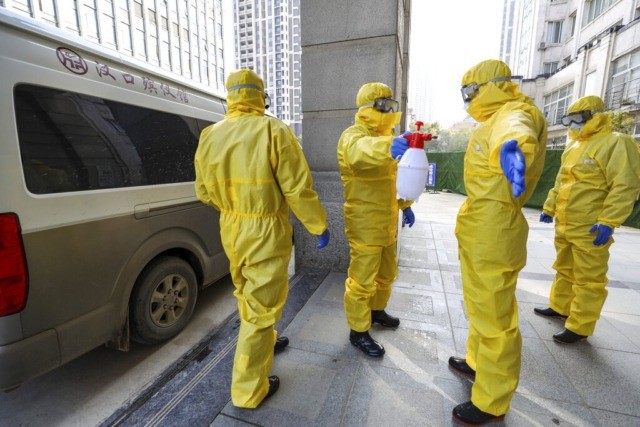The coronavirus outbreak continues to grow. On Wednesday, 201 U.S. citizens who were evacuated from Wuhan, China, arrived in the United States and were transported to the March Air Reserve Base in California, where they are being informally quarantined and monitored for a three-day period.
But there’s a crucial group of people who are not being quarantined and monitored—the thousands of Chinese nationals sneaking into the United States from Mexico.
In December, eleven Chinese migrants were caught illegally crossing the border in a rental truck carrying furniture from Tijuana to San Diego. A month earlier, six Chinese migrants had been caught sneaking into the country at the same port of entry using a moving truck. These cases were not isolated instances. They are part of a problem that has been growing for the past two years.
And it’s not a problem that’s limited to the border regions of California. Illegal entries by Chinese nationals are on the rise all across the Mexican border.
For example, look at the Rio Grande Valley (RGV) Sector, which is the section of border in Texas abutting the Gulf of Mexico. In FY 2019, the number of Chinese migrants caught at the southern border in the RGV Sector increased 85%, from approximately 700 to over 1,300.
Although figures for the entire border haven’t been made public, it is likely that the number of Chinese nationals apprehended at the Mexican border is well over 4,000. And, for every illegal alien who is caught at the border, there are at least three who make it in without getting caught.
That means that, estimating conservatively, more than 12,000 Chinese nationals entered the country illegally across the southern border in FY 2019. And none of them were screened for infectious diseases. This year a similar number are sneaking into the United States—coming from the country that is the origin of the coronavirus.
At times like this, it is imperative that the process of immigration be orderly and controlled. A secure border is essential in our defense against not only crime and terrorism, but also against pandemics.
If Congress had given the President all of the money for border wall construction that he needed back in 2017, the United States would be in a much better position to address this crisis. The 450 miles of wall that are now in the stages of planning and early construction would already be completed. And it would be much more difficult to enter the United States illegally.
And that means greater security during times of pandemic. The number of confirmed cases of coronavirus in the United States will undoubtedly grow from the six known cases—in California, Arizona, Washington State, and Illinois. But worthy of note is the case in Reynosa, Mexico, right next to the U.S. border. The international border next to Reynosa is wide open. And so is our vulnerability to the coronavirus being carried across it.
Kris W. Kobach served as the Secretary of State of Kansas during 2011-2019. An expert in immigration law and policy, he coauthored the Arizona SB-1070 immigration law and represented in federal court the 10 ICE agents who sued to stop Obama’s 2012 DACA executive amnesty. He currently serves as General Counsel for We Build the Wall and is a candidate for the U.S. Senate. His website is www.kriskobach.com.

COMMENTS
Please let us know if you're having issues with commenting.